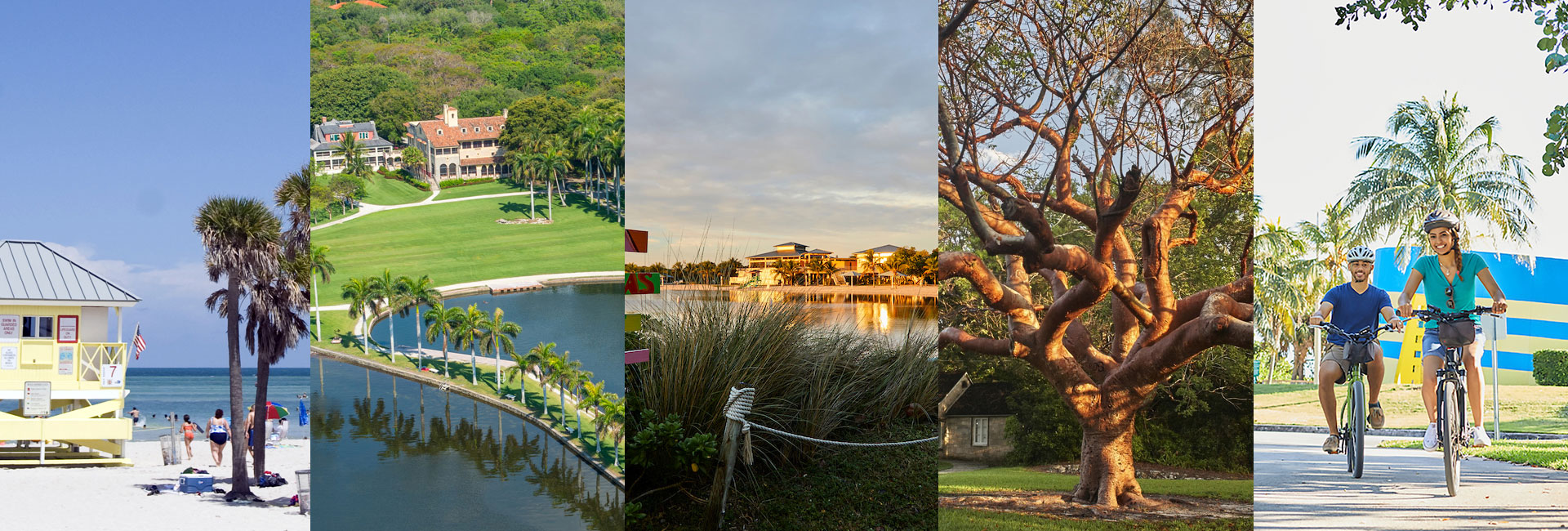Public Spaces
Museums
Museums also provide opportunities for great Public Spaces. Many museums host group field trips and special events in addition to their daily programs and activities, and are natural places for residents to congregate. Similar to libraries, museums are ideal locations for outdoor concerts, performances, exhibits, arts and crafts shows, green markets and other civic events.
Libraries
Libraries have become the centers of civic activity in many neighborhoods throughout Miami-Dade County, primarily because of the success of the branch library system concept. Residents no longer have to drive downtown to a central downtown library, but can access all of the services of the library system from their local branch. Many branch libraries have replaced the local elementary schools as the centers of local community life, and are ideal locations for the creation of new outdoor Public Spaces such as plazas, fountains and civic greens.
Schools
Schools were traditionally used as public spaces throughout Miami-Dade County and the rest of the United States, but liability and security concerns have forced many schools to severely limit public access. With forethought and good joint school-park planning, school grounds can still function well as public spaces. Playgrounds, multi-use fields, plazas and courtyards can all be designed to accommodate civic events; liability and security concerns can be addressed through the thoughtful location of these spaces, as well as the strategic location of fencing to ensure security while still allowing public access.
Transit Stations
Transit Stations provide one of the most exciting opportunities for Public Spaces in Miami-Dade County. Transit-Oriented Development (TOD) is focused on the creation of compact, walkable communities centered on a well-designed transportation station. Generally the surrounding communities are higher density and mixed-use to encourage transit ridership and provide a pleasant walking environment. As one gets farther from the station, intensity of land use typically steps down. Ultimately, TODs are intended to promote organized, directed growth along nodes and corridors rather than amorphous sprawl.
In a country where riding the train or bus is not ingrained in the culture, a major component of success for TODs is to make alternative transportation attractive. Designing for passenger comfort is essential to encourage people to utilize transit options. Stations need safe, attractive pedestrian access; comfortable places to wait; ample lighting; and effective information signage that displays fares, transit schedules and other information.
They also need to be woven into the fabric of a the community through solid connections to other modes of transportation, but also visually connected. Instead of an immense parking lot that discourages people from going to the station, a station park can attract people to the area and also provide a greater feeling of safety and serenity. For a station park or plaza, a 1/4 mile service area, a short walk, is generally accepted.
Government Buildings
Government Buildings such as City Halls, County Buildings and Administration Centers can also serve as settings for great Public Spaces, particularly for the public employees who work there. Well-designed, comfortable and shady plazas, courtyards and gardens can provide great spaces for lunch or quiet reflection, as well as opportunities for outside meetings and retreats. These spaces can also be used for green markets, arts and crafts shows and other civic events.

Parks, Recreation and Open Spaces
Maria I. Nardi
Hickman Building
275 NW 2nd Street,
Miami, FL 33128
305-755-7800

